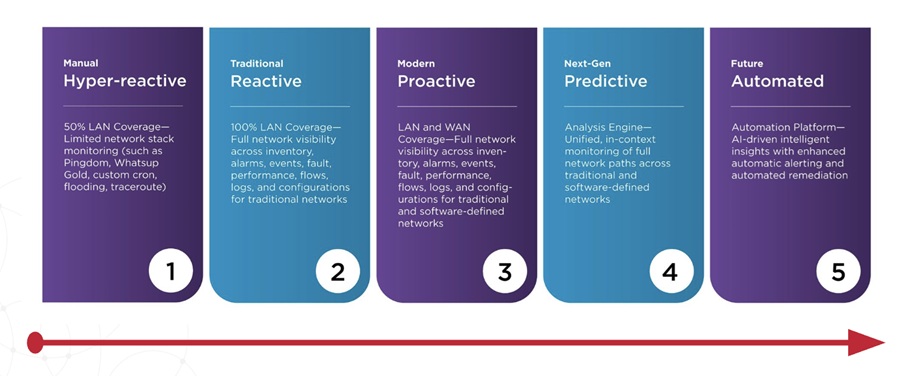Oracle announced the results of its report, From Overload to Impact: An Industry Scorecard on Big Data Business Challenges, which surveyed 333 C-level executives from US and Canadian enterprises spanning 11 industries to determine the pain points they face regarding managing the deluge of data coming into their organizations and how well they are using that information to drive profit and growth.
The data deluge is here: Ninety-four percent of C-level executives say their organization is collecting and managing more business information today than two years ago, by an average of 86 percent more.
Respondents note they see the biggest data growth areas coming from customer information (48 percent), operations (34 percent) and sales and marketing (33 percent).
Room for improvement: Executives say they are not prepared to handle the increasing amount of data they face. Twenty-nine percent of executives give their organization a “D” or “F” in preparedness to manage the data deluge, and 93 percent believe their organization is losing revenue opportunities – representing on average, 14 percent of revenue – by not being able to fully leverage the information they collect.
On average, private-sector organizations with revenues of $1 billion or more say they are losing approximately 13 percent of their annual revenue as a result of not being able to fully leverage their information. That translates to $130 million each year for a $1 billion organization. Only 8 percent of executives give their organization an “A” in preparedness.
Managers do not have or cannot get to the timely info they need: Respondents note they are frustrated with their organizations’ data gathering and distribution systems. Specifically, 38 percent note they do not have the right systems in place to gather the information they need, 36 percent cannot give their business managers access to pertinent information and need to rely on IT to compile and analyze information and 29 percent feel they are using systems that are not designed to meet the unique needs of their industry.
Setting a path forward: Ninety-seven percent of respondents note their organization must improve information optimization over the next two years. Top priorities include improving the ability to translate information into actionable insight (43 percent), acquiring tools to collect more accurate information (38 percent) and training employees to better make sense of information (38 percent).
Vertical application leap: Seventy-seven percent of organizations use industry-specific applications or software to help leverage information to make strategic decisions. The financial services (91 percent) and healthcare (87 percent) industries are most likely to use industry-specific applications.
Intelligence is a top priority: Sixty-seven percent of executives say that the ability to draw intelligence from their data is a top organizational priority.
Industry Findings
Leading the pack: Executives in the communications industry are most confident in their organizations’ preparedness for the data deluge, with 20 percent giving their organization an “A” rating. The communications, manufacturing and retail industries lose the lowest estimated percentage of additional annual revenue because of their current data management processes – 10 percent.
Flooded with data: Executives in the public sector, healthcare and utilities industries are least prepared to handle the data deluge – with 41 percent of public sector executives, 40 percent of healthcare executives and 39 percent of utilities executives giving themselves a “D” or “F” preparedness rating. The oil and gas (22 percent) and life sciences (20 percent) industries lose the greatest estimated percentage of annual revenue due to their current data management processes.
“This study shows that up to 14 percent of a company’s revenue is lost because enterprises are challenged to manage and analyze data, which grows exponentially as we speak. Enterprises can get ahead of the game by using these challenges as catalysts for company-wide strategic change. Through industry-specific applications and technologies, enterprises can transform data into measurable business benefits,” said Oracle President Mark Hurd.
Hot Topic
The Latest
According to Auvik's 2025 IT Trends Report, 60% of IT professionals feel at least moderately burned out on the job, with 43% stating that their workload is contributing to work stress. At the same time, many IT professionals are naming AI and machine learning as key areas they'd most like to upskill ...
Businesses that face downtime or outages risk financial and reputational damage, as well as reducing partner, shareholder, and customer trust. One of the major challenges that enterprises face is implementing a robust business continuity plan. What's the solution? The answer may lie in disaster recovery tactics such as truly immutable storage and regular disaster recovery testing ...
IT spending is expected to jump nearly 10% in 2025, and organizations are now facing pressure to manage costs without slowing down critical functions like observability. To meet the challenge, leaders are turning to smarter, more cost effective business strategies. Enter stage right: OpenTelemetry, the missing piece of the puzzle that is no longer just an option but rather a strategic advantage ...
Amidst the threat of cyberhacks and data breaches, companies install several security measures to keep their business safely afloat. These measures aim to protect businesses, employees, and crucial data. Yet, employees perceive them as burdensome. Frustrated with complex logins, slow access, and constant security checks, workers decide to completely bypass all security set-ups ...

In MEAN TIME TO INSIGHT Episode 13, Shamus McGillicuddy, VP of Research, Network Infrastructure and Operations, at EMA discusses hybrid multi-cloud networking strategy ...
In high-traffic environments, the sheer volume and unpredictable nature of network incidents can quickly overwhelm even the most skilled teams, hindering their ability to react swiftly and effectively, potentially impacting service availability and overall business performance. This is where closed-loop remediation comes into the picture: an IT management concept designed to address the escalating complexity of modern networks ...
In 2025, enterprise workflows are undergoing a seismic shift. Propelled by breakthroughs in generative AI (GenAI), large language models (LLMs), and natural language processing (NLP), a new paradigm is emerging — agentic AI. This technology is not just automating tasks; it's reimagining how organizations make decisions, engage customers, and operate at scale ...
In the early days of the cloud revolution, business leaders perceived cloud services as a means of sidelining IT organizations. IT was too slow, too expensive, or incapable of supporting new technologies. With a team of developers, line of business managers could deploy new applications and services in the cloud. IT has been fighting to retake control ever since. Today, IT is back in the driver's seat, according to new research by Enterprise Management Associates (EMA) ...
In today's fast-paced and increasingly complex network environments, Network Operations Centers (NOCs) are the backbone of ensuring continuous uptime, smooth service delivery, and rapid issue resolution. However, the challenges faced by NOC teams are only growing. In a recent study, 78% state network complexity has grown significantly over the last few years while 84% regularly learn about network issues from users. It is imperative we adopt a new approach to managing today's network experiences ...

From growing reliance on FinOps teams to the increasing attention on artificial intelligence (AI), and software licensing, the Flexera 2025 State of the Cloud Report digs into how organizations are improving cloud spend efficiency, while tackling the complexities of emerging technologies ...
